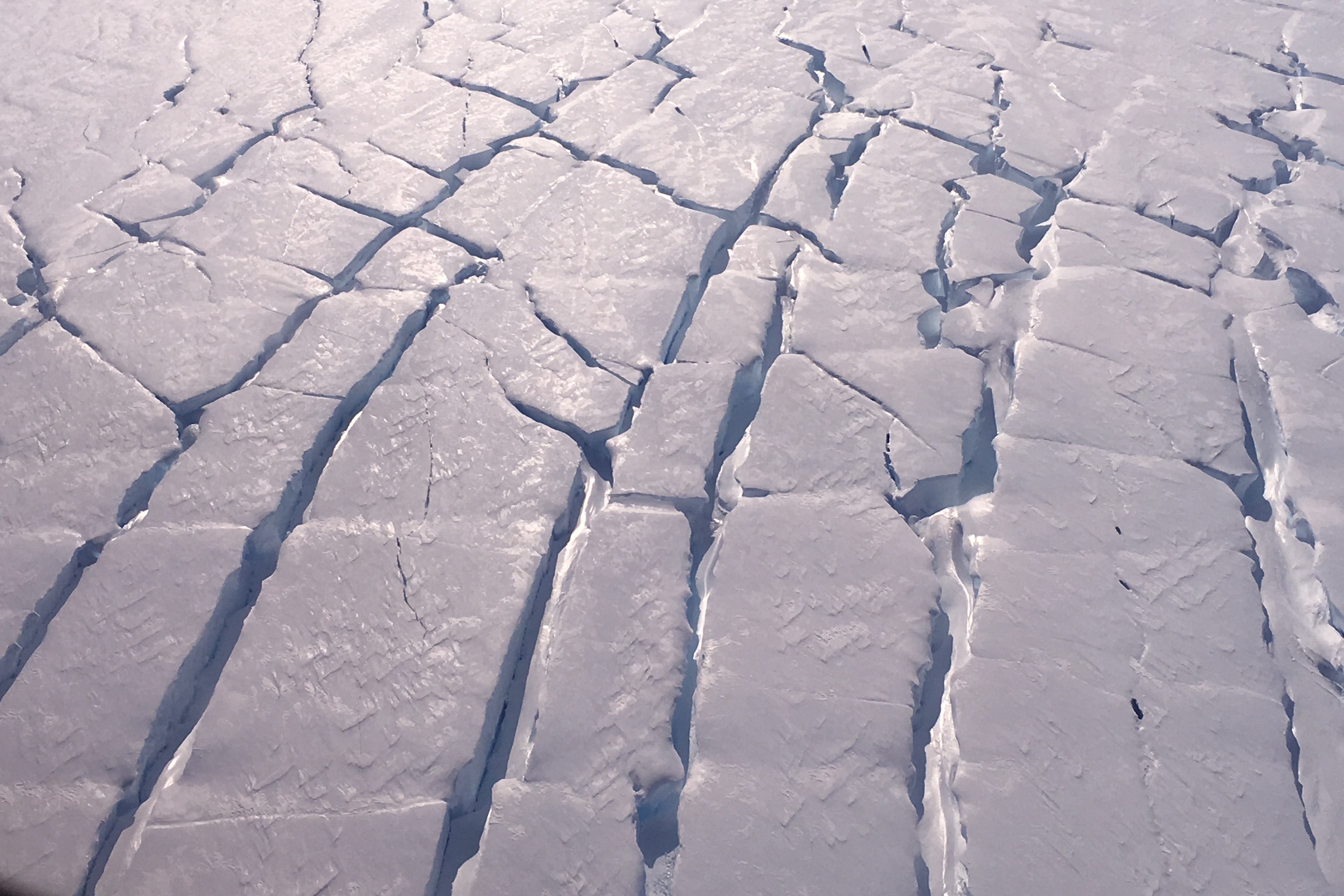Antarctica’s ‘Doomsday Glacier’ in trouble as scientists make unexpected discovery
It suggests that while melting beneath much of the ice shelf is weaker than expected, melting in cracks and crevasses is much faster

The rapid retreat of Thwaites Glacier in West Antarctica may be driven by different processes under its floating ice shelf than researchers previously understood.
A new study provides a close-up view of melting underneath the glacier using data from an international expedition and underwater robot Icefin.
Observations from where the ice enters the ocean show that while melting beneath much of the ice shelf is weaker than expected, melting in cracks and crevasses is much faster.
This means that despite small amounts of melting, there is still rapid glacier retreat.
Researchers say the findings provide an important step forward in understanding the glacier’s contribution to future sea-level rise.
Dr Peter Davis, who is an oceanographer at the British Antarctic Survey (BAS) and lead author on one of the two new studies, said: “Our results are a surprise but the glacier is still in trouble.
“If an ice shelf and a glacier is in balance, the ice coming off the continent will match the amount of ice being lost through melting and iceberg calving.
“What we have found is that despite small amounts of melting there is still rapid glacier retreat, so it seems that it doesn’t take a lot to push the glacier out of balance.”
Our results are a surprise but the glacier is still in trouble
Two papers in the journal Nature provide a clearer picture of the changes taking place under the glacier, which is the size of Great Britain or the US state of Florida, and is one of the fastest changing ice-ocean systems in Antarctica.
According to the results, although melting has increased beneath the floating ice shelf, it is taking place at a much slower rate than many computer models estimate.
A layer of fresher water between the bottom of the ice shelf and the underlying ocean slows the rate of melting along flat parts of the ice shelf.
Scientists were surprised to see the melting had formed staircase-like features across the bottom of the ice shelf.
Rapid melting is taking place in these areas, as well as in cracks in the ice, the research suggested.
Thwaites Glacier is one of the fastest-changing glaciers in Antarctica.
The grounding zone – the point where it meets the seafloor — has retreated 14km since the late 1990s.
Much of the ice sheet is below sea level and susceptible to rapid, irreversible ice loss that could raise global sea-level by more than half a metre within centuries.
The new data was collected as part of the MELT project, one of the projects in the UK-US International Thwaites Glacier Collaboration.
The team made observations of the grounding line (where the ice first meets the ocean) beneath the Thwaites Eastern Ice Shelf in order to understand how the ice and ocean interacts in this critical region.
It found that over a nine-month period, the ocean near the grounding line became warmer and saltier but the melt rate at the ice base averaged two to five metres per year – less than previously modelled.
Dr Britney Schmidt, of Cornell University in the US, and a team of scientists and engineers deployed a robot called Icefin through a 600-metre deep borehole.
Researchers say the observations it made provide more detail on the picture of how melting varies beneath the ice shelf.
They found the staircases, called terraces, as well as crevasses in the ice base are melting rapidly.
Although the vertical melting along the base of the ice shelf was less than expected, melting along sloped ice in these cracks and terraces is much higher and may be a significant factor in ice loss across Thwaites Glacier, researchers say.
Dr Schmidt said: “These new ways of observing the glacier allow us to understand that it’s not just how much melting is happening, but how and where it is happening that matters in these very warm parts of Antarctica.
“We see crevasses, and probably terraces, across warming glaciers like Thwait



Bookmark popover
Removed from bookmarks